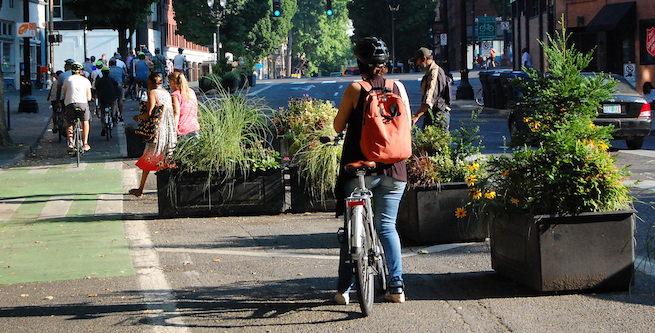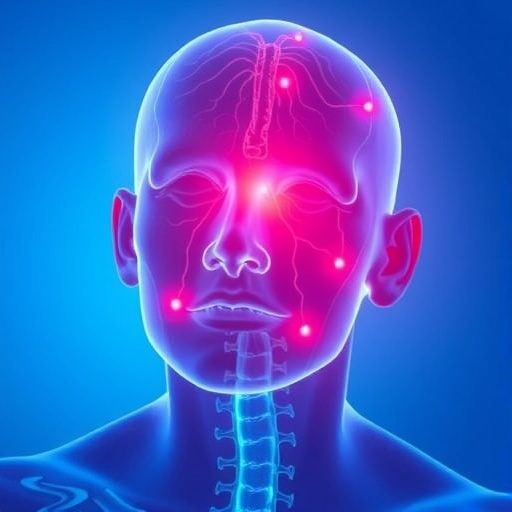Matching the speed of technology with the speed of local government

Credit: Cait McCusker
Advances in transportation technology — e-scooters and bike share, Lyft & Uber, and autonomous vehicles — are beginning to have profound impacts on cities. New mobility is changing not only how we travel, but also urban form and development itself. In the near future, we can expect differences in what public transit looks like, the layout of cities, and the places we spend our time. In turn, these changes will likely have additional effects on land use, street design, parking, housing, equity, and municipal finance. Will cities be ready to meet these changes? Rather than be swept along in the wake of change, how can communities intelligently guide urban density, sprawl, vitality, economics and sustainability?
The latest report from the National Institute for Transportation and Communities (NITC), by Marc Schlossberg and Heather Brinton of the University of Oregon, is a guide for city staff and leadership on adopting local policy and code to respond to the emergence of these technologies and encourage their responsible use. For cities that are serious about climate change and social equity, these technological changes have enormous potential to address those issues – but it won’t happen automatically.
HOW CAN CITY STAFF USE THIS RESEARCH?
The final report “Matching the Speed of Technology with the Speed of Local Government: Developing Codes and Policies Related to the Possible Impacts of New Mobility on Cities” ( PDF) offers tools for any American community that is interested in updating local policy and code to meet the transportation realities of today. The report draws on existing best practices and presents new code language that can be used or adapted by local jurisdictions. Sections 5 and 6 of the final report offer code provisions for regulation of the built environment — including curb management and off-street parking — and regulation of new travel modes. These tools give flexibility to local leaders, allowing them to respond quickly and with intention to anticipated changes to the public right of way and urban land use.
LET COMMUNITY GOALS DRIVE MOBILITY DECISIONS
The first step for any city is to identify and articulate the community’s goals and values for its public spaces–such as advancing equity, sustainability, community revitalization, and/or carbon reduction. Once those are defined, local governments can use these goals to guide how new technologies are regulated. For example, goals around equity can guide how shared mobility is deployed in the city, and climate goals may support reduction in TNC VMT, or electrification of fleets.The research identified eight key principles for cities to use as they refine their regulatory frameworks:Identify city goals, as stated above;Create a clear modal hierarchy within the city’s priorities for its transportation modes;Require citywide compliance with city transportation policy;Identify the purpose of the right-of-way as public space instead of the purview of automobiles;Identify use of the specific functions of street types and zones;Utilize overlay zones to provide flexibility to adopt different management priorities without systemic code changes;Increase funding for non-automobile infrastructure and decrease funding for automobile infrastructure; andRequire data sharing as an essential part of new mobility infrastructure.
STRONGER POLICY RECOMMENDATIONS
Section 7 of the final report offers stronger policy suggestions that can help cities leapfrog into new patterns of development and decision making. For example, cities may wish to:
Explicitly describe the right of wayDesignate ‘curb zones’ or ‘curb lanes’
Add nimble flexibility to curb zone & other parking decisions
Regulate bicycles and micromobility devices as one transportation mode
Rename bike lanes to be inclusive of other micromobility uses
Apply micromobility regulatory principles to all privately-owned vehicles
Apply TNC regulatory principles to all privately-owned vehicles
Prioritize pooled-ride for-hire vehicles
Regulate TNCs to meet sustainability goals
Accelerating and expanding the deployment of new technologies by actively promoting innovations that enhance safety and performance is a key goal of the U.S. DOT, and this research helps meet that goal by helping local governments steer new technology in the right direction.
CURRENT CRISIS: COVID-19 IMPACTS ON TRANSPORTATION
Immediately following the completion of this report, the COVID-19 pandemic began spreading, causing unprecedented disruptions to people’s mobility. Individual vehicle use and public transit experienced sharp declines at first. Use of individual vehicles are gradually rising, but transit continues to face lower ridership numbers. At first, bike share and e-scooter share systems experienced a large increase in ridership, and then a significant decline as public health warnings about the spread of COVID-19 became more urgent. Individually owned biking, however, has seen a significant increase and rates of walking, as streets have quieted with lower car use, are also going up. The public right of way – the street – has emerged as an important tool of local municipalities to address health, social, and economic challenges during a pandemic. Understanding how local policy and code can respond to disruptions (both short-term and long-term) can achieve better health, social, economic, and environmental outcomes as consistent with local values. So, while this report was completed just before the COVID-19 outbreak, its lessons and insights about matching the speed of local policy change with the speed of societal change is more important than ever.
###
This research was funded by the National Institute for Transportation and Communities, with additional support from the University of Oregon.The National Institute for Transportation and Communities (NITC) is one of seven U.S. Department of Transportation national university transportation centers. NITC is a program of the Transportation Research and Education Center (TREC) at Portland State University. This PSU-led research partnership also includes the Oregon Institute of Technology, University of Arizona, University of Oregon, University of Texas at Arlington and University of Utah. We pursue our theme — improving mobility of people and goods to build strong communities — through research, education and technology transfer.
Media Contact
Cait McCusker
[email protected]
Original Source
https:/




